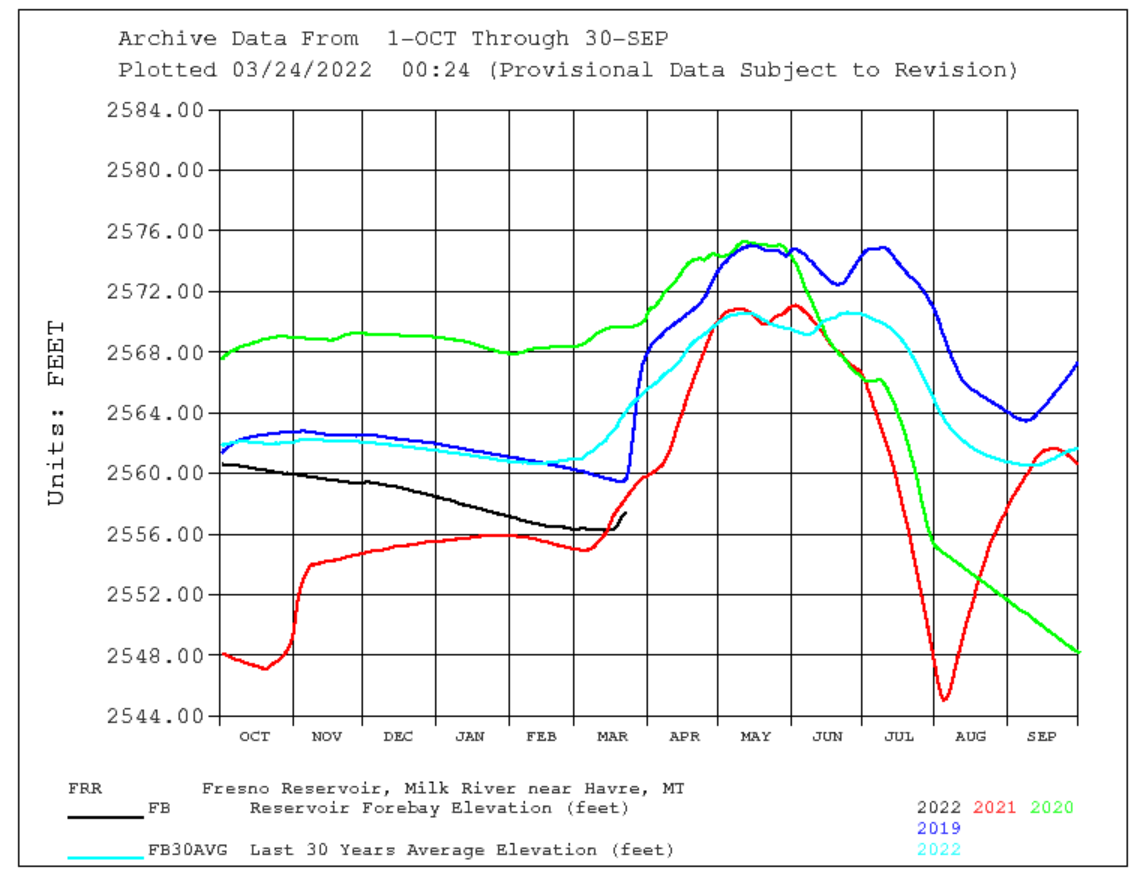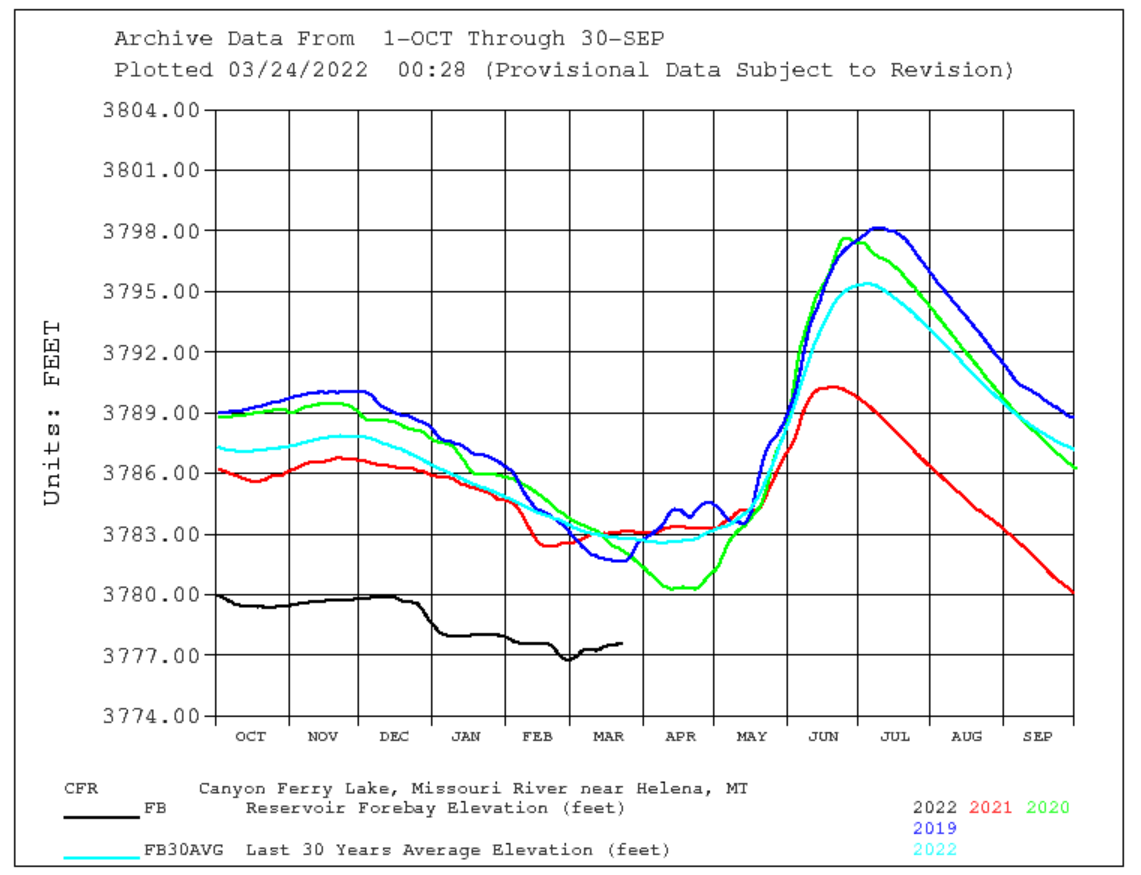GREAT FALLS — As astronomical winter comes to an end, over 50% of the state still experiencing extreme drought. The most coverage at this point in the year since 2005.

While wintertime precipitation managed to alleviate the exceptional (D4) drought many areas in central Montana had seen throughout much of fall and winter, the area needs to see above normal spring precipitation for water supply issues to not become a concern.
From Fresno Reservoir near Havre to Clark Canyon Reservoir near Dillon, the water levels are quite concerning with many reservoirs reporting 5 to 10 feet below where they had been in March of 2021, with Fort Peck Lake Reservoir recording 11 feet less than this time last year.
Fresno Reservoir in Hill County:

Gibson Reservoir in Teton and Lewis & Clark counties:

Canyon Ferry Reservoir in Lewis & Clark County:

Great Falls receives water from the Missouri River, so the threat of water supply issues impacting the Electric City remains not imminent.
According to Arin Peters, Senior Service Hydrologist with the National Weather Service in Great Falls, current trends may lead to water supply issues for irrigators along the Sun River — a thoroughfare from the Gibson Reservoir to the Missouri River.

According to Peters, the 5-foot deficit at the Canyon Ferry Reservoir is the equivalent of over 65 billion gallons of water.
Drought is not the only threat to Montana's water supply.
Bozeman receives most of its water supply from the Hyalite Reservoir, an area susceptible to wildfires. Arin explains, "If a wildfire swept through the area, it could impact the water quality enough that they could not use it for municipal supply." The city's rapidly growing population only adds to the threat of water shortages.
Arin reminds Montana residents we can do our part to conserve water ahead of a potential longer term drought, "Water your grass at night, evaporation is less which requires less water. Water less frequently, water equally ever 3 or 4 days. Of course, take shorter showers."
TRENDING ARTICLES
- Flights from GF to Chicago will resume
- Obituary: James Allen Van De Riet
- Preview of new apartment complex in GF
- Great Falls chef nominated for national award
- FAIL: trying to drive across Yellowstone River





